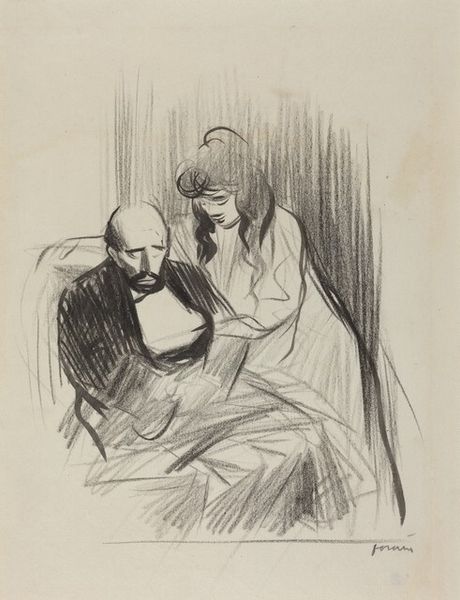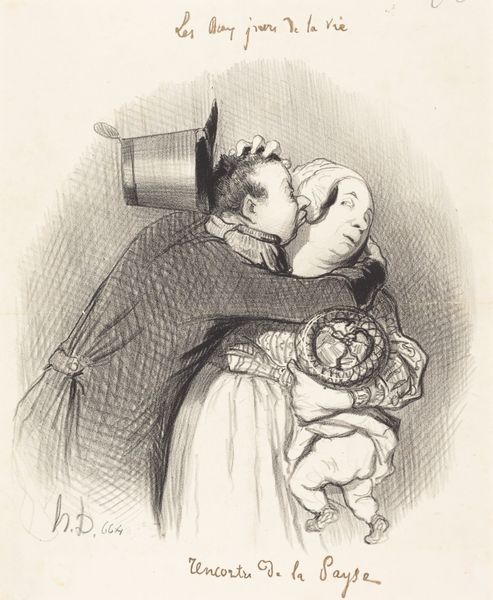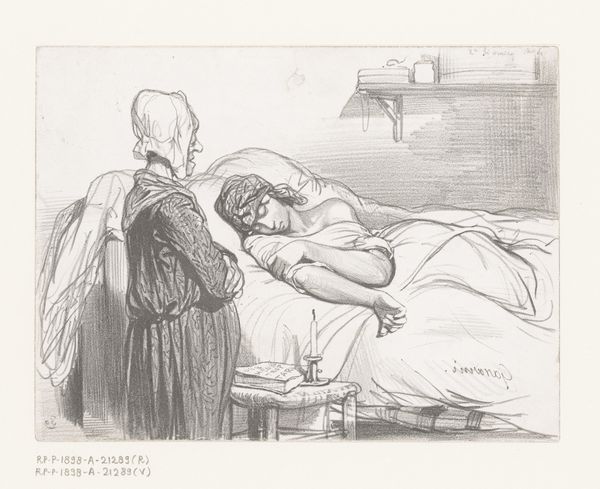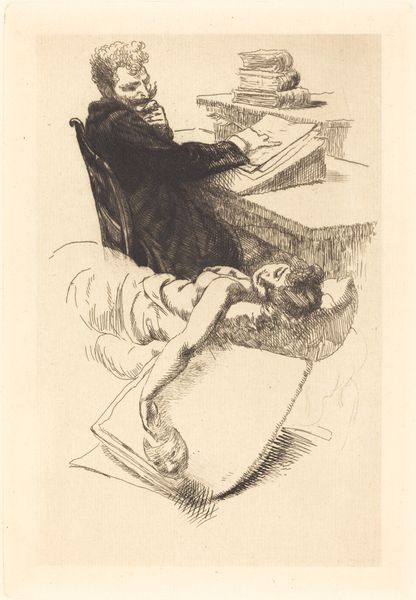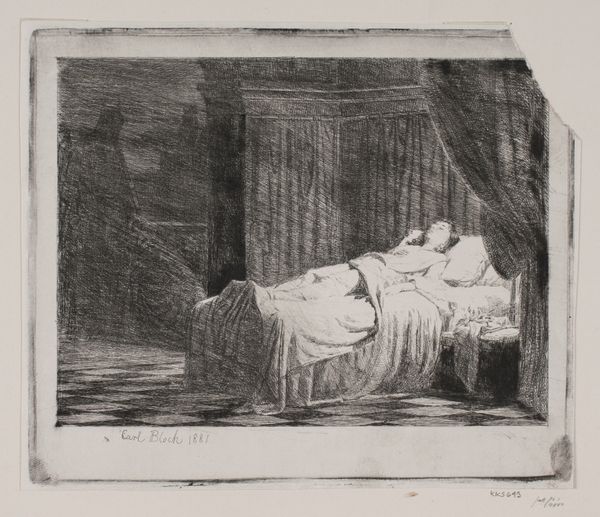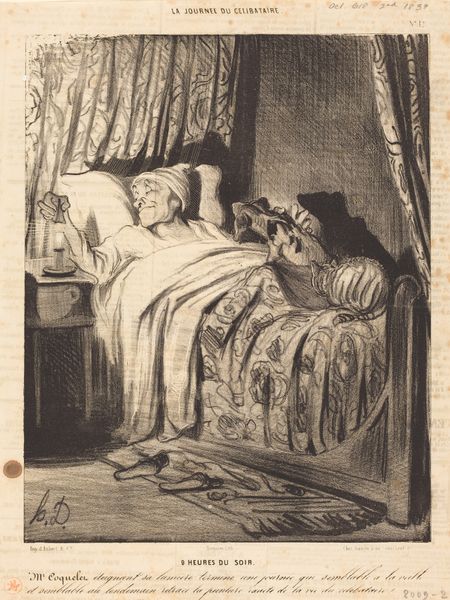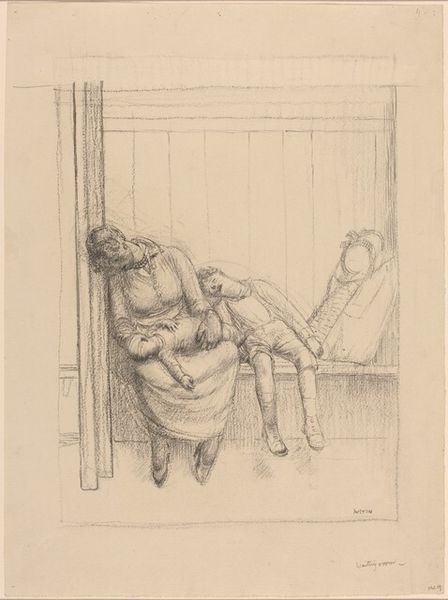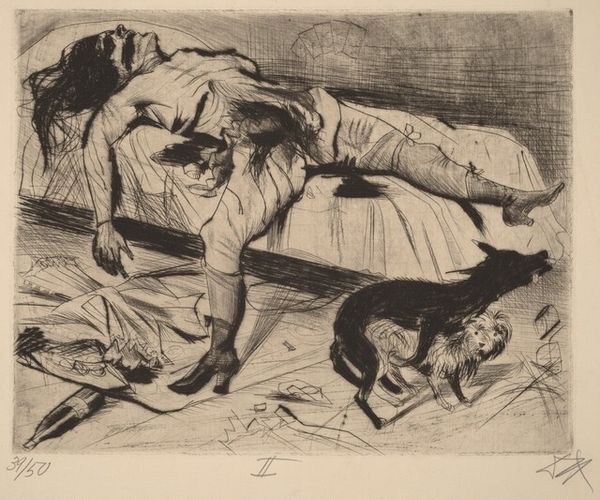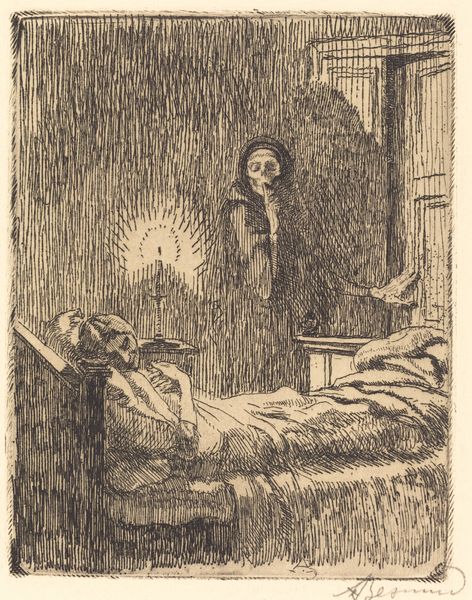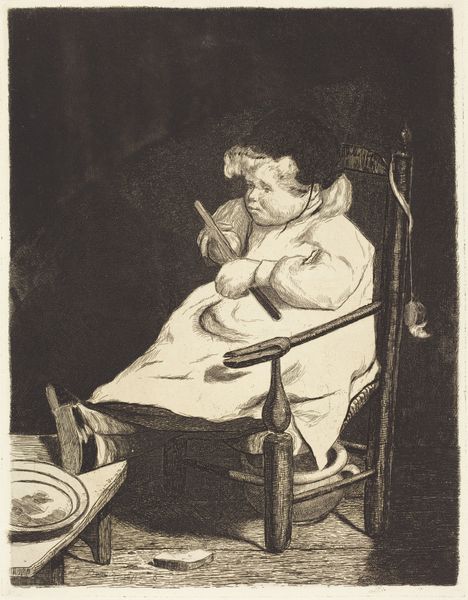
drawing, lithograph, print, ink
#
portrait
#
drawing
#
lithograph
# print
#
pencil sketch
#
figuration
#
ink
#
intimism
#
symbolism
#
genre-painting
Copyright: Public Domain: Artvee
Curator: Let's delve into Théophile Alexandre Steinlen's lithograph, "Femme de Chagrin," created in 1894. Editor: Immediately, the contrast between the dark figure and the muted background strikes me. It's stark, almost desolate, conveying a mood of quiet resignation. Curator: The title, "Woman of Sorrow," foreshadows that feeling. This work resonates within the socio-political context of late 19th-century France. Steinlen was known for portraying the lives of the working class. Here, he encapsulates the burdens carried particularly by women and caregivers. Editor: The composition certainly supports that reading. Look at the heavy lines of the woman's clothing—almost swallowing her form—set against the smooth expanse of the window behind her. The hatching creates texture, yet her figure is rendered with simplified forms that diminish individualizing features. Curator: Exactly. This evokes the overwhelming nature of her responsibilities and societal position. Notice how she looks out the window. The window's simplified linear form suggests her longing and limited view of life outside of those confines. It hints at societal limitations imposed upon women. Editor: The almost monochromatic palette adds to that solemn effect. The subtle gradations provide depth without distraction. Also the artist use of a compressed perspective that almost flattens the scene. Curator: And she holds a child, presumably her own. Childcare responsibilities largely fell on women in this era. The fatigue is almost palpable, the downcast gaze almost a symbol of systemic constraints and limited opportunity. There is no space for joy. Editor: Right, and observe how the baby is clinging to her—there’s almost a mirroring effect there. Even the tiny figure expresses a somber tone which binds them in shared melancholy. The lines capture the weight, literal and figurative. Curator: Yes, Steinlen masterfully uses simplicity to create a window into these harsh realities. He creates a narrative of womanhood through line and form. Editor: I see now how form enhances content. It gives powerful meaning through composition and materiality. I feel more profoundly connected. Curator: By analyzing visual art through a feminist lens we give more depth. In "Femme de Chagrin," Steinlen prompts us to confront the challenges faced by women historically, making the experience of marginalized voices visible.
Comments
No comments
Be the first to comment and join the conversation on the ultimate creative platform.
